Ant mimicry is mimicry of ants by other organisms. Ants are abundant all over the world, and insect predators that rely on vision to identify their prey such as birds and wasps normally avoid them, either because they are unpalatable, or aggressive. Thus some other arthropods mimic ants to escape predation (protective mimicry). Conversely, some species (e.g. Zodariidae spiders) use their anatomical and behavioral ant mimicry to hunt ants (aggressive mimicry). Other cases are also known.[1] The term myrmecomorphy is also used to describe ant mimicry.
Protective mimicry - mimic ants to avoid predation.
Female ant-mimic jumping spider, Myrmarachne sp. (left) mimicking a weaver ant (right)

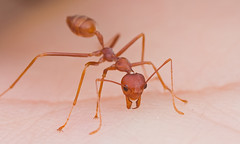
Male ant-mimic jumping spider, Myrmarachne sp. mimicking a weaver ant carrying another worker, according to Wikipedia.

A black ant-mimic jumping spider, probably mimicking a Tetraponera sp. ant?
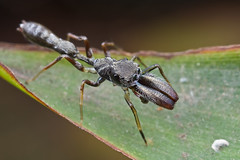
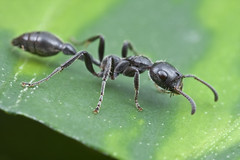
An ant-mimic katydid of Macroxiphus sp. nymph, a mimicry of the Camponotus sp.?

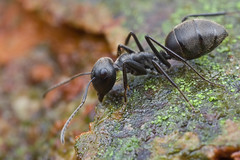
A red and black ant-mimic jumping spider, surely a mimicry of the fearsome semut selangor " Tetraponera rufonigra. (Image taken by Aniruddha, author of "Wanderer's Eye"
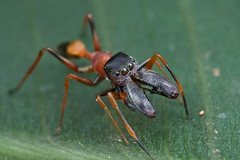

Black ant-mimic jumping spider, mimicking the Polyrhachis sp?
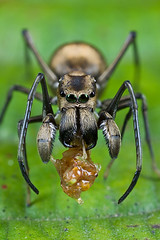

An ant-mimicking stick insect nymph:

Ant-mimicking mantis nymph
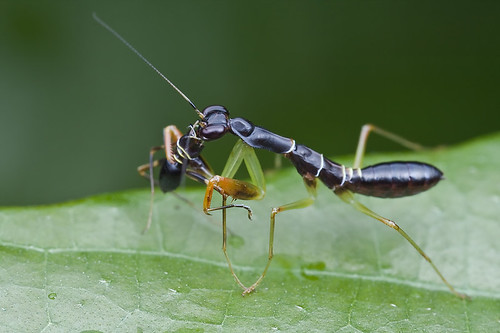
Ant-mimic Alydidae, two of them.
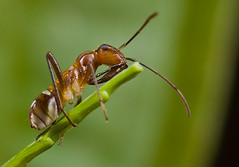
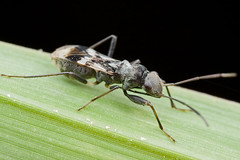
Aggressive mimicry - mimic ants in order to hunt them!
A male ant mimic crab spider Amyciaea lineatipes with weaver ant prey.

An assassin bug nymph, Acanthaspis petax, with ant carcasses on its back, and an ant prey!
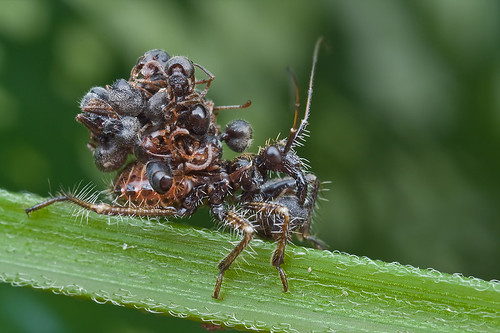
fantastic collection!
ReplyDeleteI would have never believed that an whatever bug (assassin or peaceful) could carry its pray on its back. Beautiful my friend.
ReplyDeletegreat collection Master Kurt!!! very beautiful ant mimicry!
ReplyDeleteThanks Tom, Bogdan, JW :)
ReplyDeletenice collection master!
ReplyDeleteI love to see mimic ants.
ReplyDeleteThe spider that mimics Tetraponera rufonigra ants looks like Myrmarachne formicaria or Myrmarachne orientales. One is a palearctic species, the another one is an Indian species.
ReplyDeleteThis comment has been removed by a blog administrator.
ReplyDeleteThis comment has been removed by a blog administrator.
ReplyDeleteThis comment has been removed by a blog administrator.
ReplyDelete